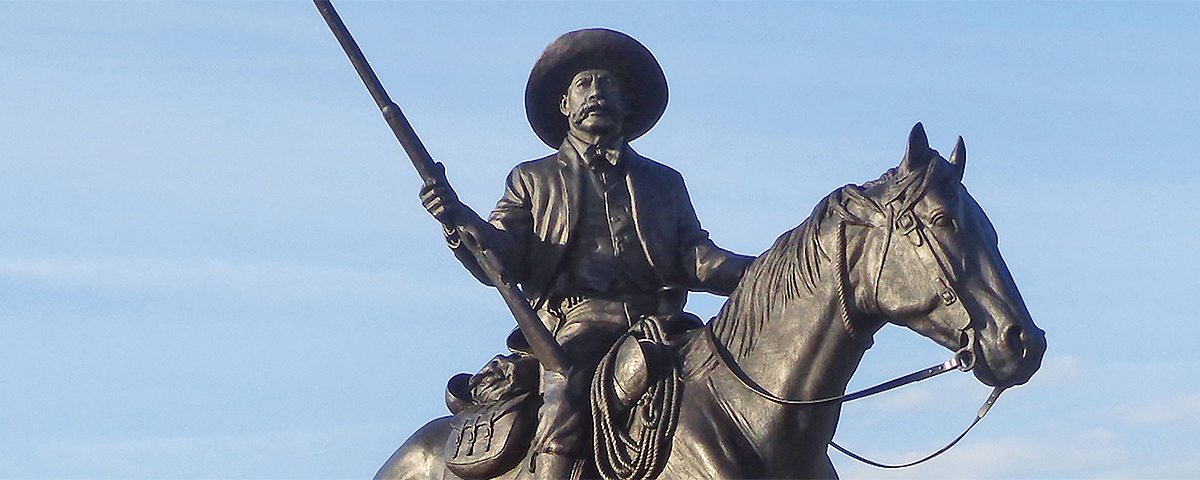In Fort Smith, Arkansas, lawman Bass Reeves rides Into the Territory, a larger-than-life bronze sculpture created by Oklahoman Harold T. “H” Holden and dedicated in 2012. The 25-foot-tall mounted figure, which stands atop a base of old cobblestone from downtown Garrison Avenue, was funded completely by donations—$300,000 worth. It took five years for Holden to finish. “I had to research all I could find on [Reeves],” the 77-year-old artist explains from his home in Enid, Oklahoma. “I think I read four or five books and used photographs to help me with his face. He had a dog with him a lot, so I put the tracking dog in there.”
Born into slavery, Reeves (1838–1910) became a deputy U.S. marshal, served under Judge Isaac Parker out of Fort Smith and wore a badge for most of his life. In all the lawman arrested roughly 3,000 felons and shot and killed another 14 in self-defense. “He was pretty good getting the job done,” Holden affirms. So is the artist, who was inducted into the Oklahoma Hall of Fame in 2014 and the National Cowboy & Western Heritage Museum’s Hall of Great Westerners in 2017.
Holden’s interest in art came early. “I’d draw cowboys and Indians in all my schoolbooks,” he says. His passion drew him from Oklahoma State University to the Texas Academy of Art in Houston, then to work as a commercial artist in Wichita, Kan., and Houston, including a stint as art director of Horseman magazine.
‘Well, when it comes to gunfighters and lawmen, we had a lot of them’
Painting is Holden’s first love, and he still works in oils, pastels and charcoal. He created the art for a 1993 U.S. Postal Service stamp that commemorated the centennial of the Cherokee Strip Land Run, and he rendered a portrait of lawman Bill Tilghman that hangs in the Oklahoma State Capitol in Oklahoma City.
But monumental sculptures have become his bread and butter. Among his signature works are Boomer (1987), a generic land run rider, created for the city of Enid; The Rancher (1987), for the National Ranching Heritage Center in Lubbock, Texas; Headin’ to Market (2000), for Oklahoma City’s historic Stockyards City; and Will Rogers “Oklahoma’s Native Son” (2005), a bronze of the beloved cowboy humorist swinging a lariat on horseback, which graces Oklahoma City’s Will Rogers World Airport.
Holden enjoys paying homage to Oklahoma’s homegrown heroes. “Tilghman, Reeves…” he begins to list. “Well, when it comes to gunfighters and lawmen, we had a lot of them.”
Others have approached him about erecting monuments to other Oklahoma legends, including gunman Frank “Pistol Pete” Eaton, business magnate and Oklahoma State University booster T. Boone Pickens, and former OSU running back Barry Sanders, who played for the Detroit Lions and was inducted into the Pro Football Hall of Fame in 2004. “I’ll do the Eaton one,” Holden confirms. “I don’t know about the other two.”
Despite a 2010 lung transplant, Holden isn’t ready to retire, at least from working in bronze. “I like to paint, but it gets harder and harder all the time,” he admits. “Sculptures come pretty easy for me, or at least seem to. My lung feels fine, but my back hurts. Guess I got bucked off too many horses.” WW





